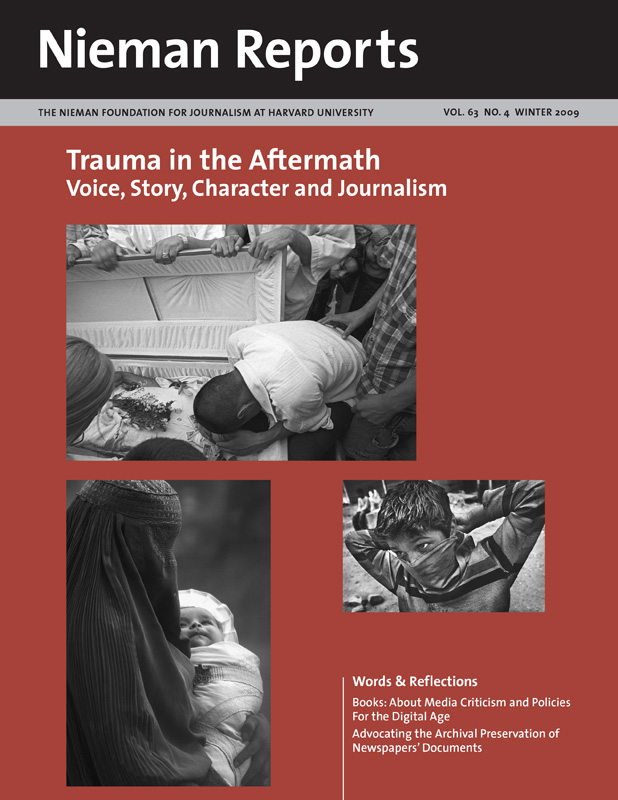
An Afghan woman. Photo by Iason Athanasiadis.
Scan headlines and our journalistic challenges reveal themselves.
“Mother Slain in Lowell as Children Watch; Man Held”
“Gang Gunfire May Chase Chicago Children From Their School”
“War Memories May Harm Health”
“Murder and Mayhem at Fort Hood: Post-Traumatic Embitterment, Madness, or Political Terrorism?”
Words not familiar to many a decade ago now appear daily in news coverage. Post-traumatic stress disorder slips into PTSD with nodding familiarity, as does the phrase “child witness to violence.” Knowledge of emotional injury now informs a reporter’s sense of its deeper dimensions when violence visits a family, a community, a nation. News happens. Stories are told. Then, reporting about the aftermath begins.
Read the words of Luis Moreno-Ocampo, prosecutor of the International Criminal Court—words he penned about a photographic exhibit of child soldiers—and in them one hears an organizing purpose for the next stage of reportorial pursuit. “Delve deeply into the eyes of these children, into the eyes above all else,” he wrote about these images from war. “For there you may see the future gaze of disoriented, disconnected tormented adults, miniature walking time bombs for whom society will struggle to find a place.”
Such haunting gazes are found, too, in grown-ups. Tragedy and violence they have experienced is often observed in their hesitancy to speak of what they know, in their distancing expressions, and in the physical manifestations of their stress.
In this collection of stories, journalists search for language to convey what it means for someone to survive crippling moments of horror. They explore how it is that reporters try to heal themselves after witnessing violence while also acting as part of their newsroom’s effort to heal a community. They tell of carving out safe places to speak about their own internal reactions to what they’ve seen and heard and of pulling open the stoic curtain of invulnerabilty by seeking help. And they share how grief invades reporters’ hearts when death steals the lives of colleagues because of words they’ve written or images they’ve shown.
Step inside their journeys and emerge with a deeper understanding of why journalists tell these stories and how we can better report on the aftermath.


